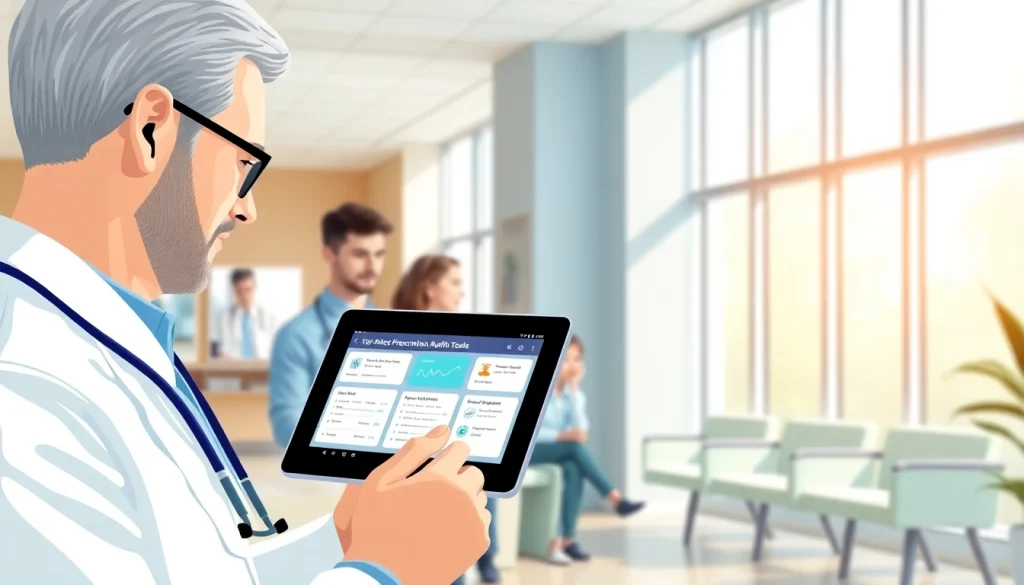
Understanding Top Rated Prescription Applications
In the digital age, healthcare is continually evolving, reshaping the way patients connect with their providers and manage their medications. This transformation has paved the way for a surge in the adoption of technology-driven solutions known as top rated prescription applications. These intuitive applications bridge gaps between patients, healthcare providers, and pharmacies, offering more accessible and streamlined healthcare services.
What Are Prescription Applications?
Prescription applications are software designed to assist patients, doctors, and pharmacists in managing medications and prescriptions. These applications can be installed on smartphones, tablets, or accessed through web browsers, creating a user-friendly interface that can facilitate various functionalities:
- Medication Management: Tracking doses, schedules, and refills.
- Telehealth Services: Enabling virtual consultations with healthcare professionals.
- Pharmacy Integration: Direct communication with pharmacy systems for prescription changes and refills.
- Health Records: Storing and retrieving patient health histories seamlessly.
Benefits of Using Top Rated Prescription Applications
The proliferation of top rated prescription applications has brought about numerous benefits not just for healthcare providers but more importantly for patients:
- Improved Accessibility: Patients can manage their prescriptions from anywhere, eliminating the need for physical visits to medical offices.
- Enhanced Communication: Real-time interactions with healthcare providers ensure that patients receive timely consultations and prescription updates.
- Personalized Experience: Many of these applications utilize patient data to offer tailored reminders and alerts about medication schedules.
- Cost Efficiency: By managing medications efficiently, patients often experience reduced healthcare costs due to fewer medication errors and improved adherence rates.
Key Features to Look For
Choosing the right prescription application involves understanding which features are essential for optimal usage:
- User-Friendly Interface: An intuitive design that allows for easy navigation is crucial for user engagement.
- Secure Data Management: Applications must comply with healthcare regulations, ensuring the protection of sensitive patient information.
- Integration Capabilities: Look for applications that can easily connect with existing healthcare systems and pharmacies.
- Customizable Reminders: Effective applications should allow users to set personalized medication and refill alerts.
Top Rated Prescription Applications in the Market
Popular Choices with High Ratings
In the landscape of digital medicine, several prescription applications stand out due to their innovative features and widespread adoption:
- MediSafe: Known for its user-friendly interface and robust reminder systems.
- GoodRx: Offers price comparison features and access to telehealth services.
- MyTherapy: Combines medication tracking with health journal features for comprehensive health management.
- Epocrates: Provides critical drug information to healthcare professionals, enhancing their prescription accuracy.
Comparison of Features and Usability
A thorough comparison of how these applications perform against each other can provide insights into their effectiveness. Factors to evaluate include:
- Ease of Use: Assess the learning curve associated with each application.
- Customer Support: Availability of help and resources for users experiencing difficulties.
- Update Frequency: How often the application receives updates can affect its performance and security.
User Reviews and Experiences
User feedback plays a significant role in determining the reliability and effectiveness of prescription applications. Potential users should look at:
- Overall Ratings: Checking ratings on app stores to gauge general user satisfaction.
- Specific Feedback: Reading through reviews to understand strengths and weaknesses from real user experiences.
Implementing Top Rated Prescription Applications
Steps to Get Started
Adopting a prescription application requires a systematic approach to ensure that both patients and healthcare providers can maximize the technological advantages:
- Identify Needs: Evaluate the specific requirements of your practice or personal health management.
- Select an Application: Choose an application based on your needs and the comparative analysis.
- Setup and Customization: Install the application and set up necessary preferences, including reminder alerts.
- Train Users: Ensure that all potential users are trained in how to utilize the application effectively.
Integrating With Existing Healthcare Systems
Successful integration with existing systems can enhance the functionality of your top rated prescription applications. Consider the following:
- API Compatibility: Check that the application is compatible with your existing health record systems.
- Data Migration: Ensure that data can be transferred securely from old systems to the new application.
- Testing: Conduct thorough testing to confirm that the new application works seamlessly with existing structures before going live.
Training Staff and Patients
Training is crucial for maximizing effectiveness. Implement regular training sessions that cover:
- Application Features: Provide comprehensive overviews of functionalities.
- Troubleshooting: Equip users with skills to resolve common issues independently.
- Feedback Collection: Encourage users to share their experiences to improve overall service.
Best Practices for Using Prescription Applications
Ensuring Patient Privacy and Security
Patient privacy is non-negotiable in healthcare app usage. Follow these best practices:
- Data Encryption: Ensure that all transferred data is encrypted to protect sensitive information.
- Access Controls: Implement strict access controls so that only authorized personnel can view sensitive data.
- Compliance: Regularly check that the application meets all necessary regulatory requirements.
Continuous User Engagement and Feedback
Engagement is key to successful long-term utilization. Strategies to enhance engagement should include:
- Regular Updates: Keep users informed of new features and improvements.
- Surveys and Feedback Forms: Actively seek user feedback to guide future app developments.
- User Community: Create forums or discussion groups where users can share tips and experiences.
Maximizing the Utility of the Applications
To ensure that you are getting the most from your prescription application, consider:
- Custom Alerts: Tailor reminders for medications to ensure users stay compliant.
- Education Resources: Leverage built-in resources or external links to educate users about their medications.
- Regular Check-ins: Schedule times to monitor usage and discuss any issues or questions with the team.
Future of Top Rated Prescription Applications
Upcoming Features and Innovations
The future of prescription applications looks promising with the introduction of various innovations, such as:
- AI-Driven Insights: Integrating artificial intelligence for personalized medication recommendations based on user data.
- Integration with Wearable Devices: Tools that connect with health monitors for comprehensive tracking.
- Blockchain for Security: Potential use of blockchain technology to enhance data security and patient privacy.
Impact on Healthcare Delivery
The adoption of top rated prescription applications is likely to impact healthcare delivery significantly, producing benefits such as:
- Improved Adherence: Enhanced tracking capabilities can lead to better patient adherence to medication regimens.
- Reduction in Errors: The prescriptive process becomes less error-prone with integrated and accurate applications.
- Healthcare Personalization: Customized treatment plans based on real-time data analysis can lead to better health outcomes.
Predictions for User Adoption and Market Growth
As healthcare technology continues to advance, predictions suggest that the user adoption of prescription applications will surge. Factors contributing to this growth include:
- Increased Awareness: Rising awareness among patients about the benefits of using these applications will drive adoption.
- Technological Advancements: Continuous improvement in app functionality and user experience will increase satisfaction.
- Healthcare Policy Changes: Policies promoting the digital transformation of health systems will foster usage.






